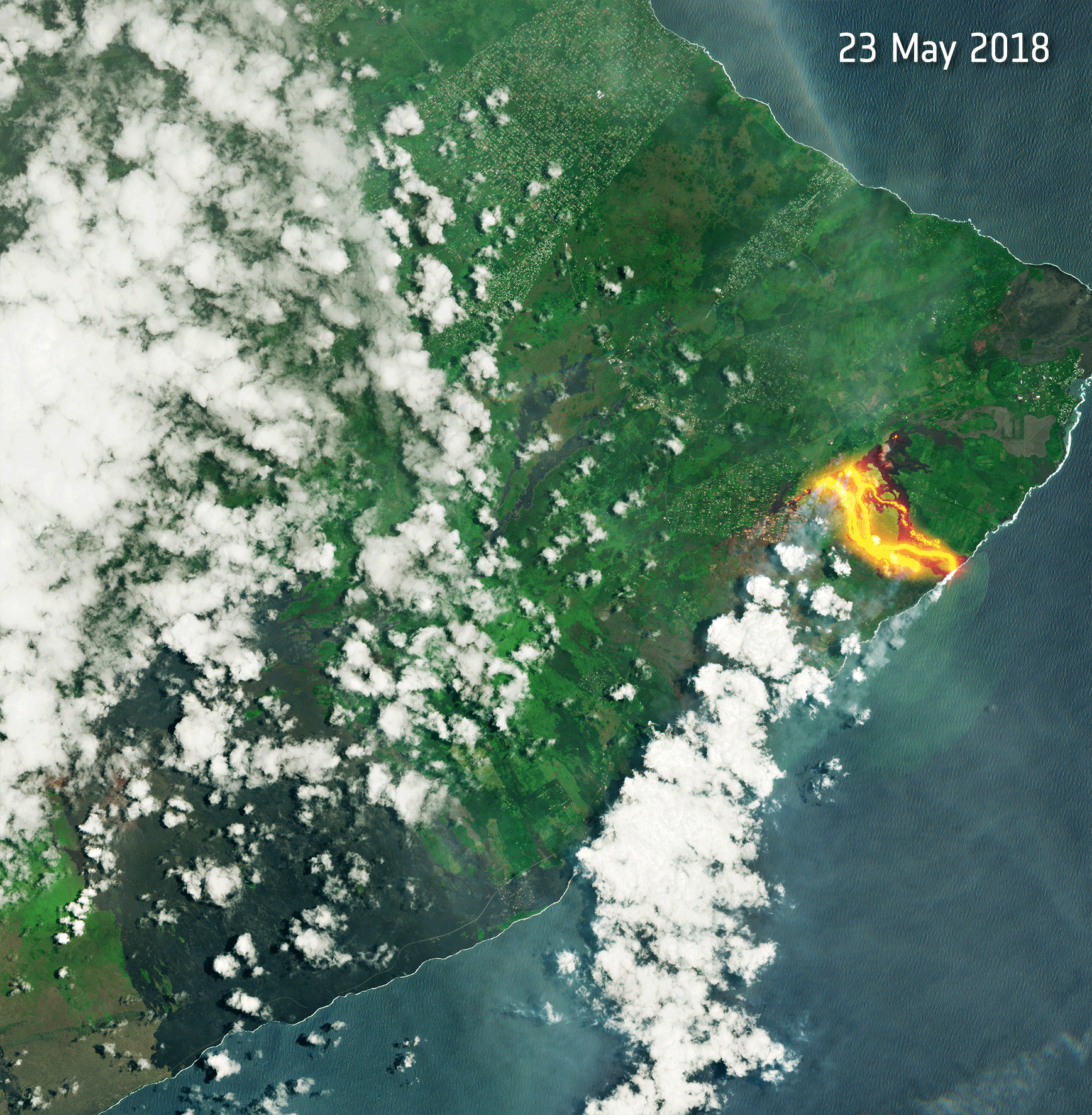
The Copernicus Sentinel-2 satellite captured the changing paths that the bright-orange lava rivers took to enter the Pacific Ocean. While the European Space Agency's mission mainly provides information for agricultural and forestry practices, its images of disasters such as volcanic eruptions can be used to help assess damage. (ESA/<a href="http://www.esa.int/spaceinimages/ESA_Multimedia/Copyright_Notice_Images">CC BY-SA 3.0 IGO</a>)
The tale of Hawaii's recent volcanic eruptions continues to change, much like its fierce lava flows, and new images from space tell the latest chapter.
Two satellites and a camera-wielding astronaut captured powerful overhead views of the active Kilauea volcano on Hawaii's Big Island. Images taken from late May to Sunday (June 10) show molten material churning out from volcanic fissures on a journey toward the Pacific Ocean on the southeast corner of the island. Volcanic smog, known as vog, rises into the air.
The devastation left in the volcano's wake is palpable in the time-lapse imagery released by officials at the European Space Agency (ESA) on June 8. The ESA Copernicus Sentinel-2 satellite captured the changing paths that the bright-orange lava rivers took to enter the Pacific Ocean. Distinct paths are apparent when viewing the May 23 and June 8 photos one after the other. [In Photos: Hawaii's Kilauea Volcano Eruption as Seen from Space]
In a related image caption, ESA officials shared that the lava flows have destroyed around 600 homes, calling the flows' rapid property destruction unprecedented.
More From Space.com
"While the Sentinel-2 mission mainly provides information for agricultural and forestry practices and to map changes in land cover, its images of disasters such as volcanic eruptions can be used to help assess damage," ESA officials stated.
Another view came in on June 3, when the WorldView-3 satellite from space-imagery company DigitalGlobe caught the devastation as active lava flows approached Kapoho Bay. DigitalGlobe released the color, near-infrared and shortwave infrared resolution imagery via tweet the following day, June 4. [Photos: Fiery Lava from Kilauea Volcano Erupts on Hawaii's Big Island]
And on Sunday (June 10), NASA astronaut and Expedition 56 Cmdr. Drew Feustel tweeted an image of vog emanating from the island's coast and at other points along the lava's paths. "Expedition 56 is thinking of Hawaii as the dynamic Earth continues to evolve," Feustel shared in the Twitter post.
Visit our sister site Live Science for updates on Hawaii's volcanic activity. Island residents can sign up for alerts from the County of Hawaii here.
Original article on Space.com.
